The front door of a Colonial-style home is more than just an entry point; it's a statement of timeless elegance and historical reverence. This architectural style, known for its symmetry and understated grandeur, places significant emphasis on the main entrance as the central focal point. Choosing the right front door can dramatically enhance your home's curb appeal, reflecting a heritage of classic American design. From specific panel configurations and traditional colors to decorative hardware and surrounding architectural elements, each detail contributes to an authentic and welcoming facade that honors its historical roots while suiting modern tastes.
1. The Classic Six-Panel Colonial Front Door
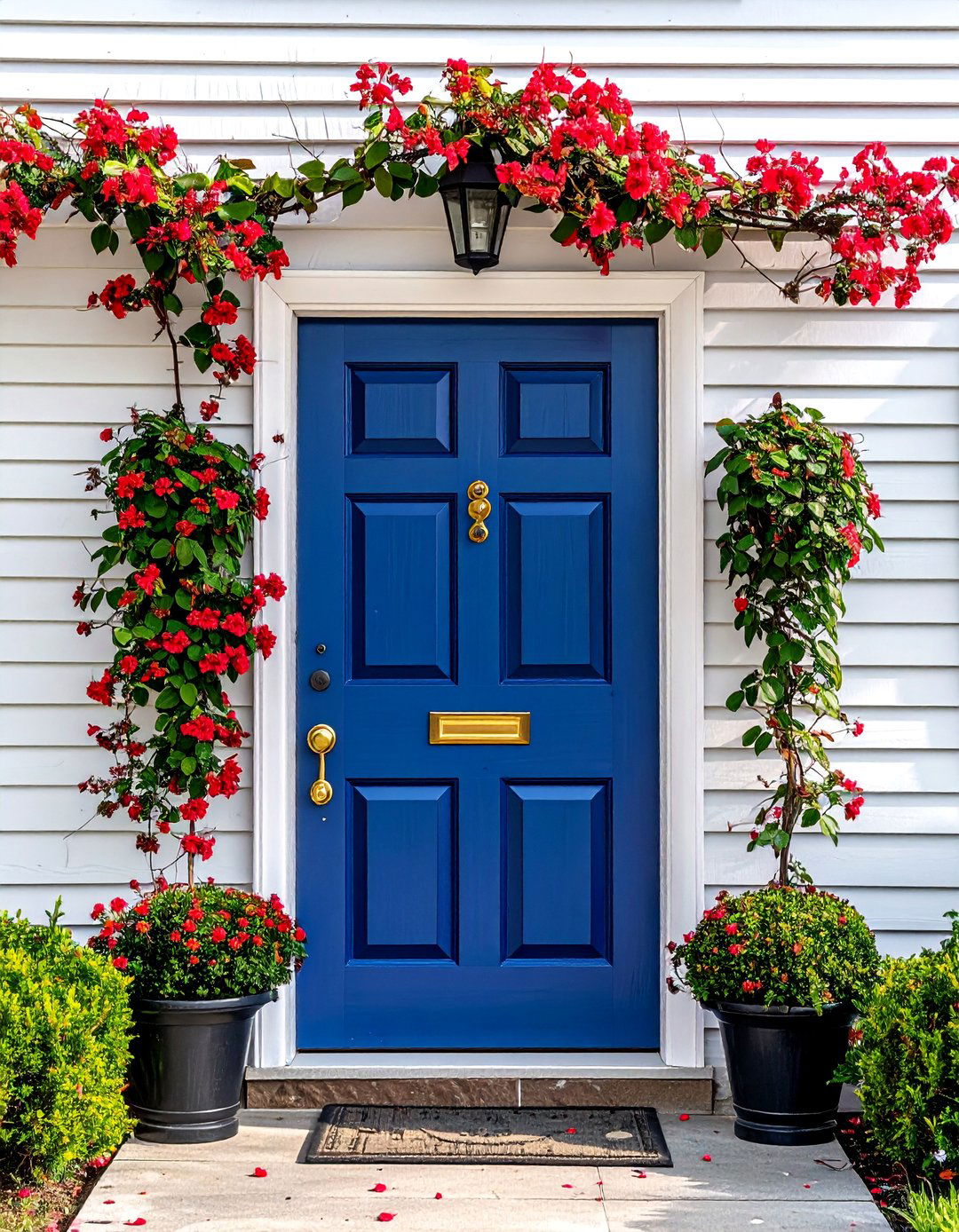
A quintessential element of Colonial design, the six-panel door offers a look of balanced and refined symmetry. This traditional configuration features six raised or flat rectangular panels, typically with two smaller panels at the top, two long panels in the middle, and two medium panels at the bottom. This design originated from the practical need to construct doors from smaller pieces of wood, which resisted warping better than a single large plank. Opting for a solid wood six-panel door, painted in a historically accurate color, instantly establishes an authentic Colonial aesthetic that is both sturdy and gracefully proportioned.
2. Colonial Front Door with a Transom Window
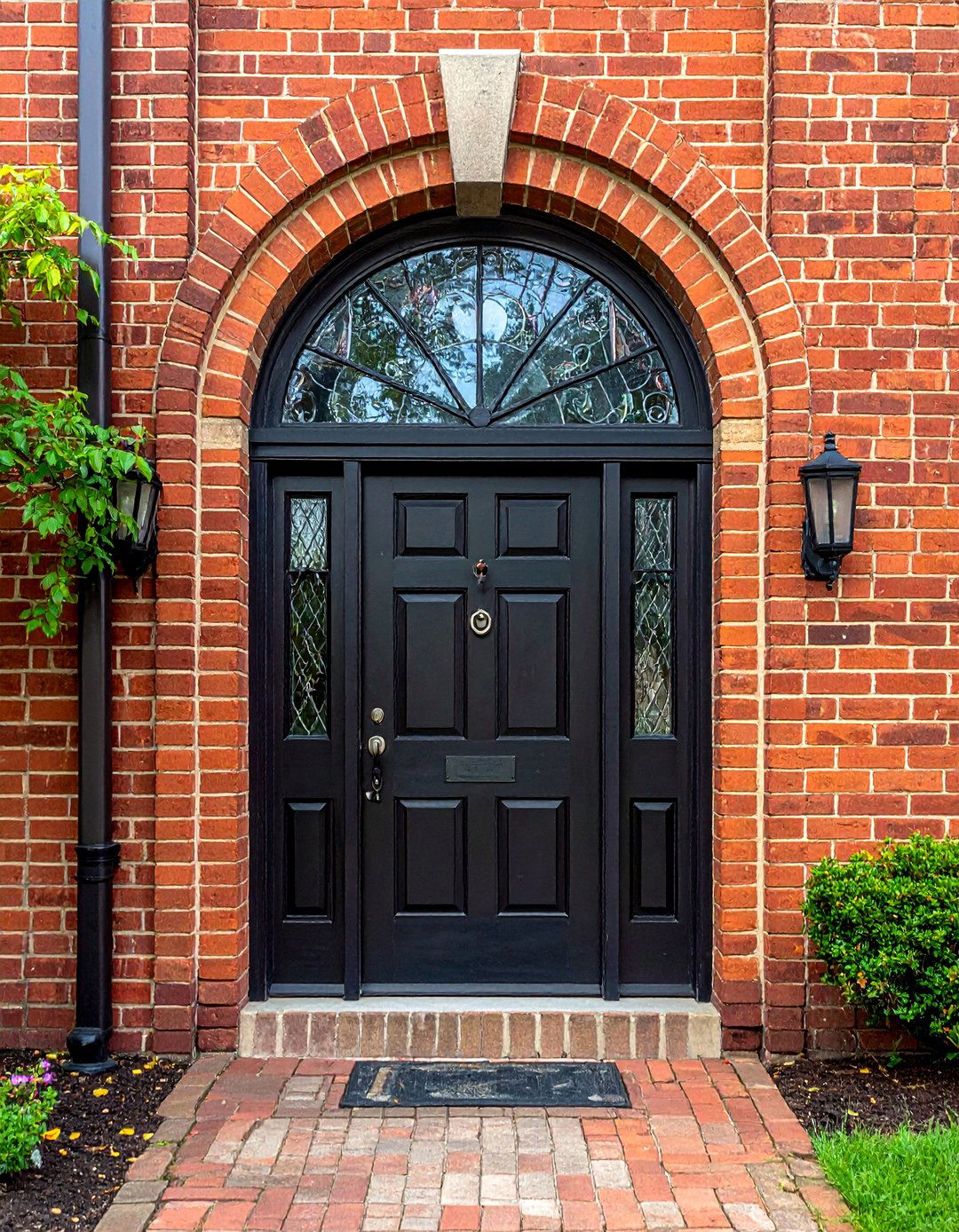
To introduce more natural light into the entryway without compromising privacy, a transom window above the front door is an excellent choice. This fixed or operable pane of glass sits directly over the door frame, often featuring a rectangular or fanlight shape. In Colonial architecture, transoms were a practical solution for ventilation and light before modern systems existed. A transom with divided lites or leaded glass adds intricate detail and historical charm, elongating the entrance vertically and creating a grander, more formal appearance that feels both bright and architecturally sophisticated, enhancing the home's overall facade.
3. Colonial Front Door Flanked by Sidelights

For a wider and more welcoming entrance, incorporating sidelights on one or both sides of your Colonial door is a superb idea. These narrow, vertical windows mirror the door's height and often feature glass panes divided by mullions, complementing the door's paneling. Sidelights serve the dual purpose of brightening the interior foyer with sunlight and visually expanding the entryway for a more substantial and impressive look. They maintain the symmetrical principles of Colonial design while adding an element of elegance and openness, making the home appear more inviting from the curb.
4. A Bold Red Colonial Front Door

Historically, a red front door symbolized a safe and welcoming place for travelers. This tradition continues today, with a vibrant red door offering a powerful statement against the often muted palettes of Colonial homes, such as white, gray, or cream siding. A deep, rich crimson or a brighter barn red can create a stunning focal point, drawing the eye and exuding confidence and hospitality. Paired with polished brass hardware, a red door becomes a timeless feature that provides a pop of color while remaining firmly rooted in historical significance, creating memorable curb appeal.
5. An Elegant Black Colonial Front Door
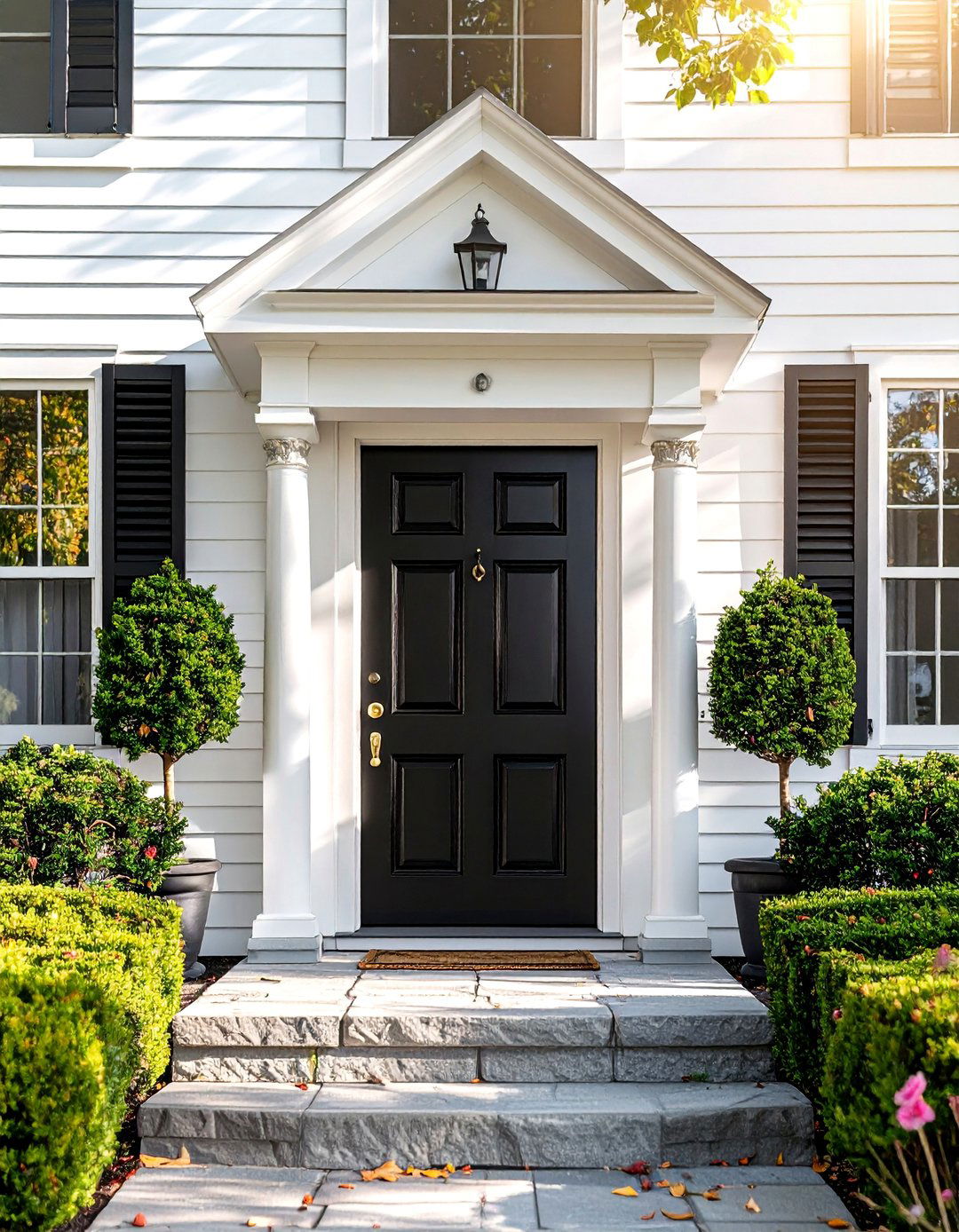
Nothing speaks to classic sophistication quite like a black front door. This choice provides a sharp, dignified contrast that highlights the architectural details of a Colonial home. A high-gloss black finish adds a touch of formal elegance, beautifully reflecting light and accentuating the door's panels and hardware. Whether your home features brick, stone, or wood siding, a black door offers a versatile and grounding element that never goes out of style. It conveys a sense of stability and refinement, making it a perennially popular choice for homeowners seeking a timeless and impactful entrance.
6. A Welcoming Navy Blue Colonial Front Door
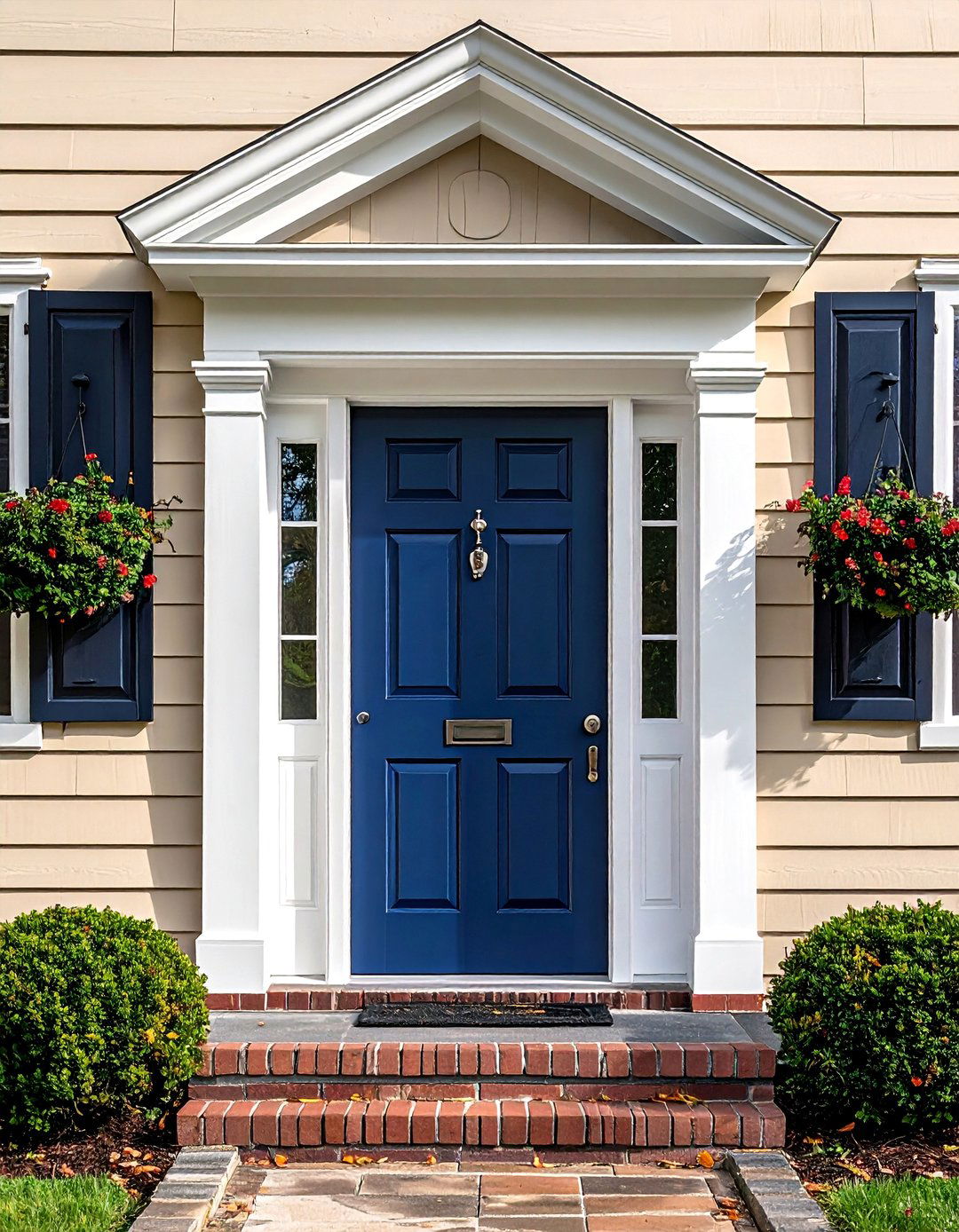
A deep navy blue front door provides a distinguished and calming alternative to black or red. This color evokes a sense of nautical heritage, particularly fitting for Colonial homes in coastal regions, yet it is versatile enough for any setting. Navy blue is sophisticated and stately, offering a rich hue that pairs exceptionally well with crisp white trim and traditional siding colors. It feels both classic and contemporary, lending an air of quiet confidence to the home's facade. Complemented by brass or nickel hardware, a navy door creates an inviting and polished look that is full of character.
7. The Charming Colonial Dutch Door

For a touch of rustic charm and practicality, consider a Colonial Dutch door. This unique design is split horizontally, allowing the top half to open independently of the bottom half. This feature was historically used to let in light and air while keeping children inside and animals out. A Dutch door adds immense character and a quaint, cottage-like feel to a Colonial home's entrance. It’s perfect for fostering a connection between the indoors and outdoors, making the home feel more approachable and friendly. Painted in a soft, welcoming color, it becomes a conversational and functional statement piece.
8. Colonial Front Door with an Elaborate Pediment

To create a truly grand entrance, crowning your Colonial front door with a decorative pediment is a powerful architectural choice. A pediment is a triangular or arched ornamental feature placed above the door, often supported by columns or pilasters. This classical element, borrowed from Greek and Roman architecture, was widely used in Georgian Colonial homes to signify importance and wealth. Whether you choose a traditional triangular shape, a gracefully curved swan's neck pediment, or a simpler segmented arch, this addition elevates the doorway from a simple entrance to a magnificent architectural focal point.
9. Polished Brass Hardware on a Colonial Front Door
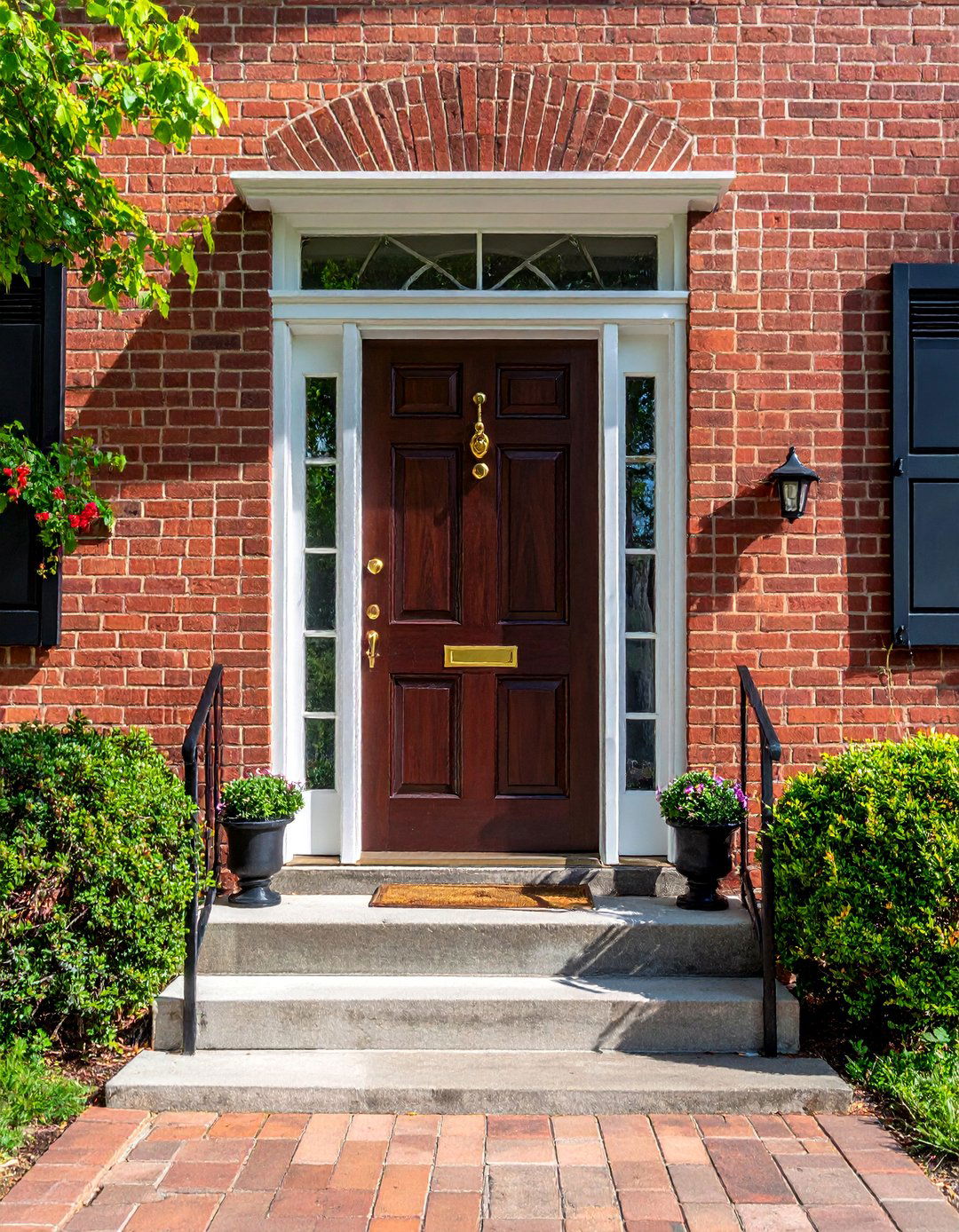
The right hardware is crucial for an authentic Colonial look, and polished brass is the ultimate classic choice. A sturdy brass handle set, a decorative door knocker, and a kick plate all contribute to a historically accurate and luxurious aesthetic. The warm, golden tone of polished brass stands out beautifully against traditional door colors like black, red, or navy, adding a touch of brilliance and refinement. Over time, it can develop a rich patina that enhances its character. This attention to detail signals quality and a deep appreciation for the traditional craftsmanship inherent in Colonial design.
10. Colonial Front Door Framed by Dentil Molding
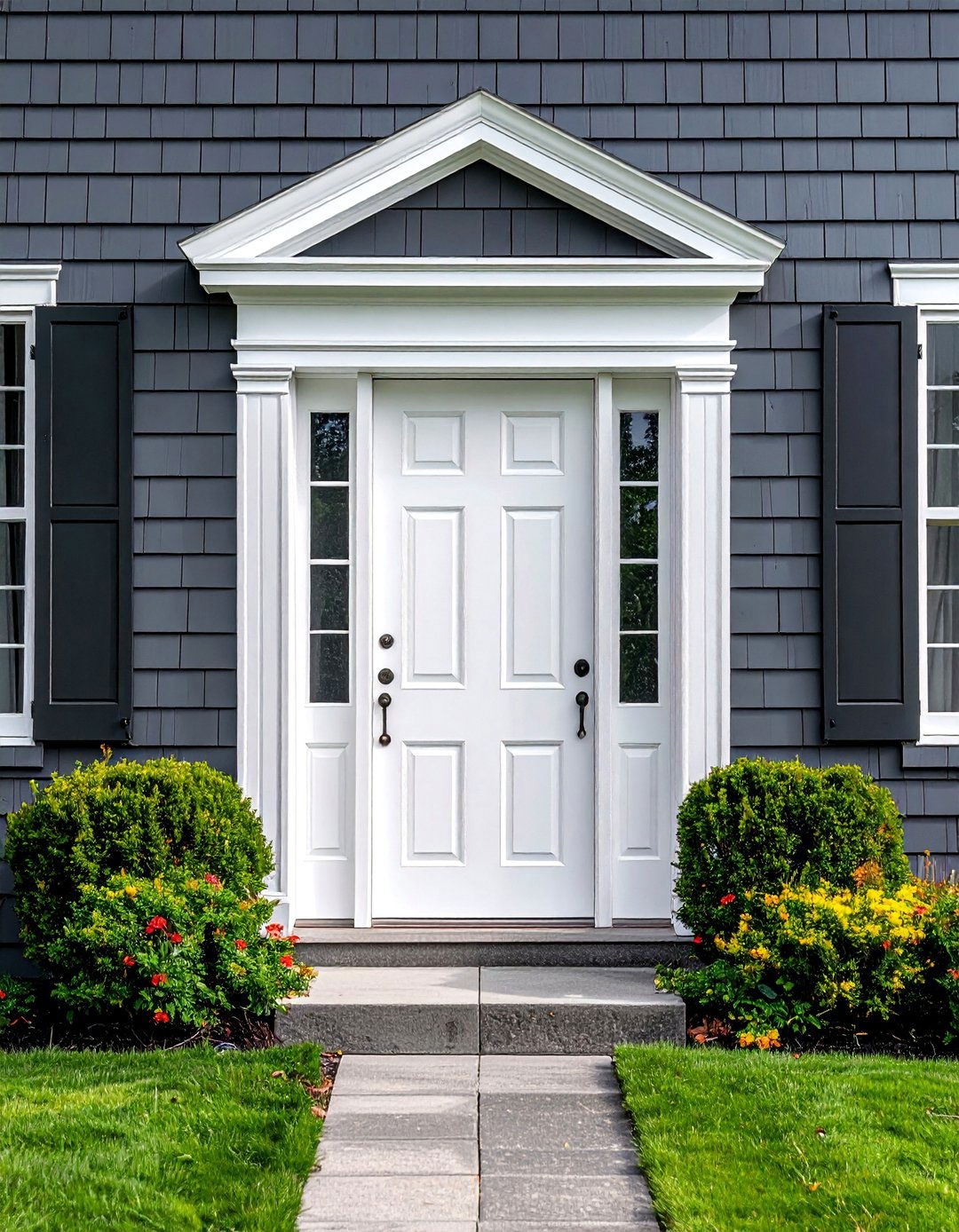
Adding dentil molding around the door frame is a subtle yet highly effective way to enhance your Colonial entryway. Dentil molding consists of a series of small, tooth-like blocks used as a decorative element just below the roofline or, in this case, integrated into the door's surround. This detail adds texture, shadow, and a sense of refined craftsmanship, reflecting the high-style Georgian and Federal periods of Colonial architecture. It’s a sophisticated touch that enriches the door's presence without overwhelming it, contributing to a layered and historically rich facade that viewers will appreciate up close.
11. An Arched Top Colonial Front Door
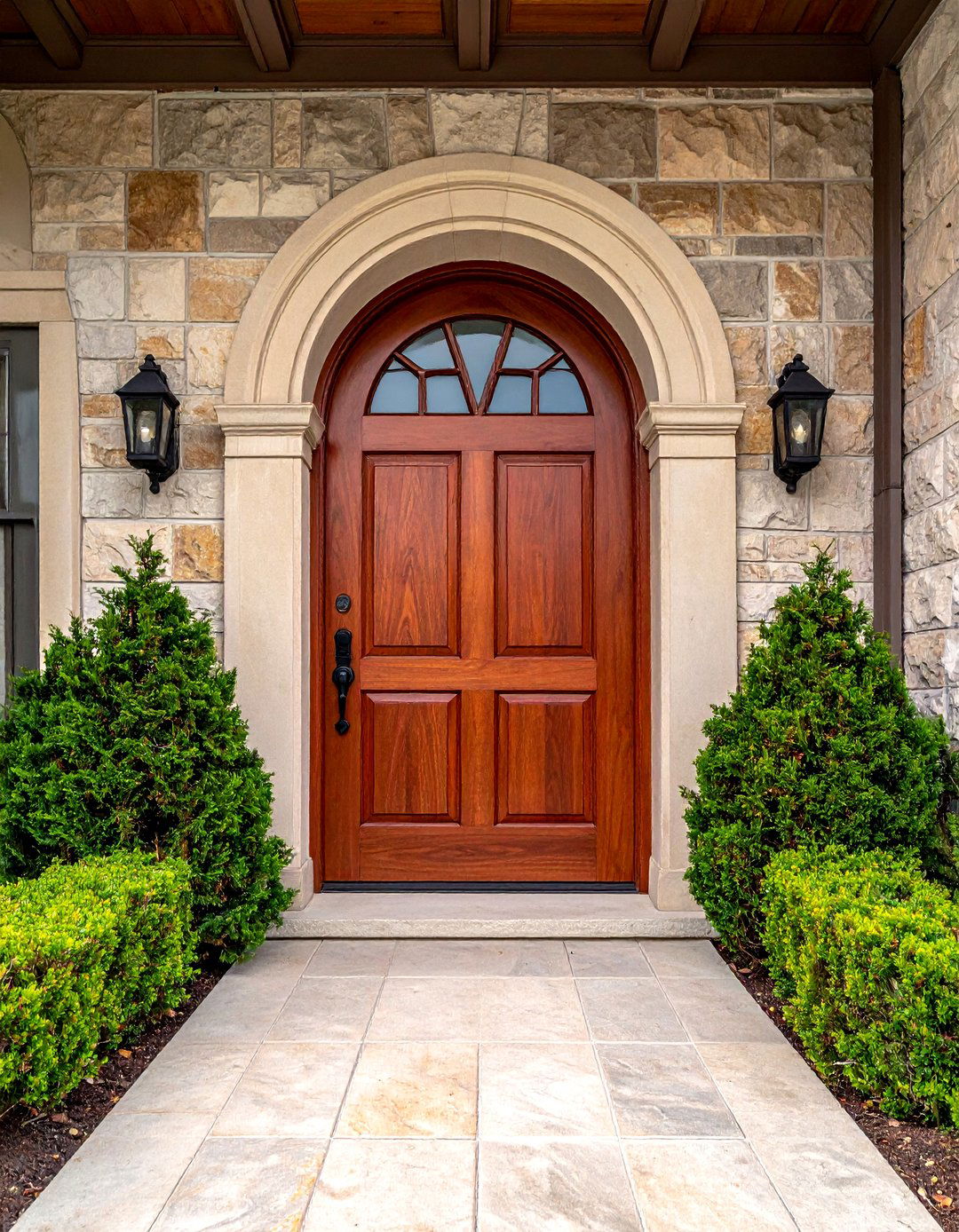
While most Colonial doors are rectangular, an arched top door can introduce a softer, more graceful silhouette to your home's facade. This design, often found in high-style Georgian or Federal homes, breaks from the rigid symmetry to create a uniquely elegant focal point. An arched door, especially when paired with a matching fanlight transom window, adds a sense of verticality and grandeur. It can be constructed with traditional paneling or feature a glass inset to allow more light into the foyer. This choice lends a custom, distinguished feel to the entrance, setting your home apart.
12. Grandeur with Double Colonial Front Doors

For homes with a wider facade and a focus on perfect symmetry, double front doors make an imposing and stately impression. This arrangement amplifies the sense of arrival, creating a grand and welcoming entryway that is perfectly balanced. Each door typically mirrors the other, often featuring a classic six-panel design and identical hardware. Double doors are particularly well-suited for larger Georgian-style Colonial homes, where they underscore the structure's formal and symmetrical principles. Painted in a commanding color, this feature transforms the entrance into a powerful statement of classic elegance and hospitality.
13. Colonial Front Door with a Boxwood Wreath
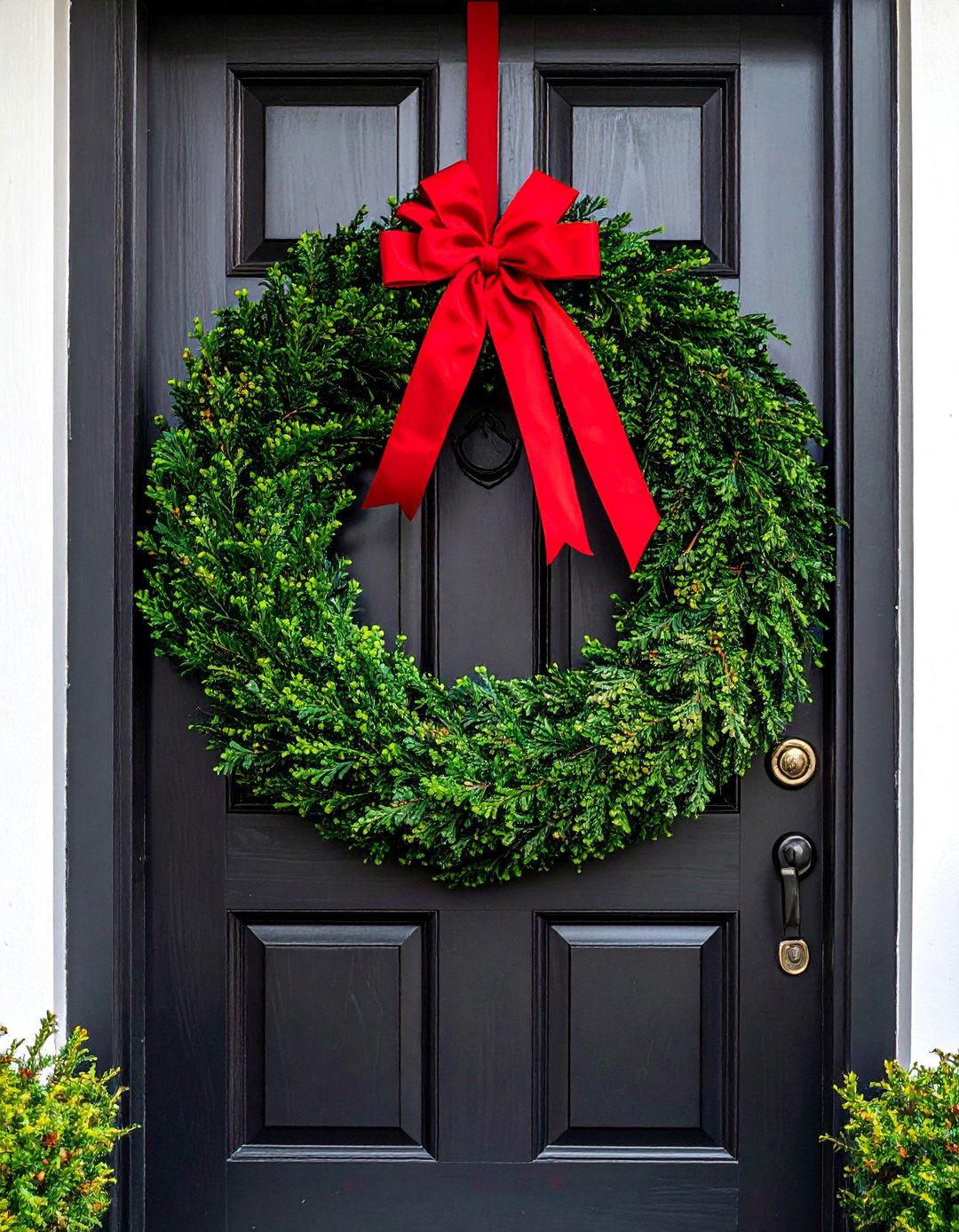
Sometimes, the simplest additions have the greatest impact. A classic boxwood wreath hanging on a Colonial front door provides a touch of year-round natural beauty and traditional charm. The deep green foliage of a preserved or faux boxwood wreath offers a lovely contrast against any door color, adding texture and a welcoming, organic element. Unlike seasonal wreaths, the timeless simplicity of boxwood is appropriate for any time of year. This small detail reinforces the home's connection to classic design traditions and offers a simple, elegant way to enhance curb appeal with minimal effort.
14. A Rustic Crossbuck Panel Colonial Front Door
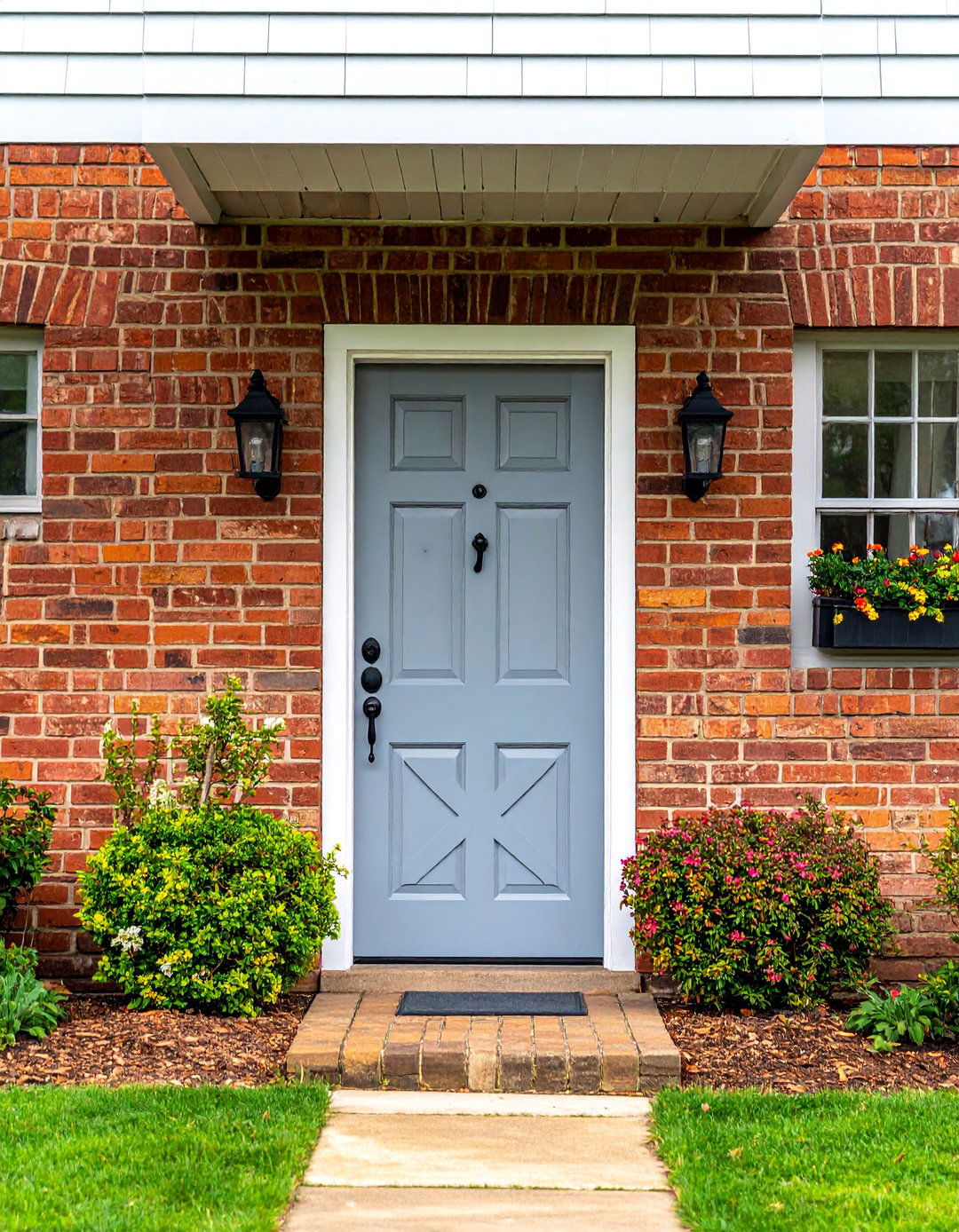
Introducing a crossbuck or "X" design on the lower panels of a Colonial door can add a touch of rustic, farmhouse-inspired charm. This style is often seen on barn doors but has roots in early colonial craftsmanship, evoking a sense of sturdy, practical construction. A crossbuck detail is particularly effective on Dutch doors or doors for homes with a more relaxed, country Colonial aesthetic. It adds visual interest and texture to the door's surface while maintaining a classic, handcrafted feel. Paired with a natural wood finish or a muted paint color, it creates a welcoming and unpretentious entrance.
15. A Natural Wood Stain Colonial Front Door

While painted doors are very common, a natural wood stain offers a warm and timeless alternative. A beautifully stained mahogany, oak, or cherry door highlights the natural grain and texture of the wood, adding depth and organic beauty to the home's entrance. This choice works especially well with brick or stone exteriors, as the warm wood tones complement the earthy materials. A high-quality stain and protective finish not only showcase the craftsmanship of the door but also create a rich, inviting focal point that feels both elegant and grounded in nature.
16. Colonial Front Door with Surrounding Pilasters
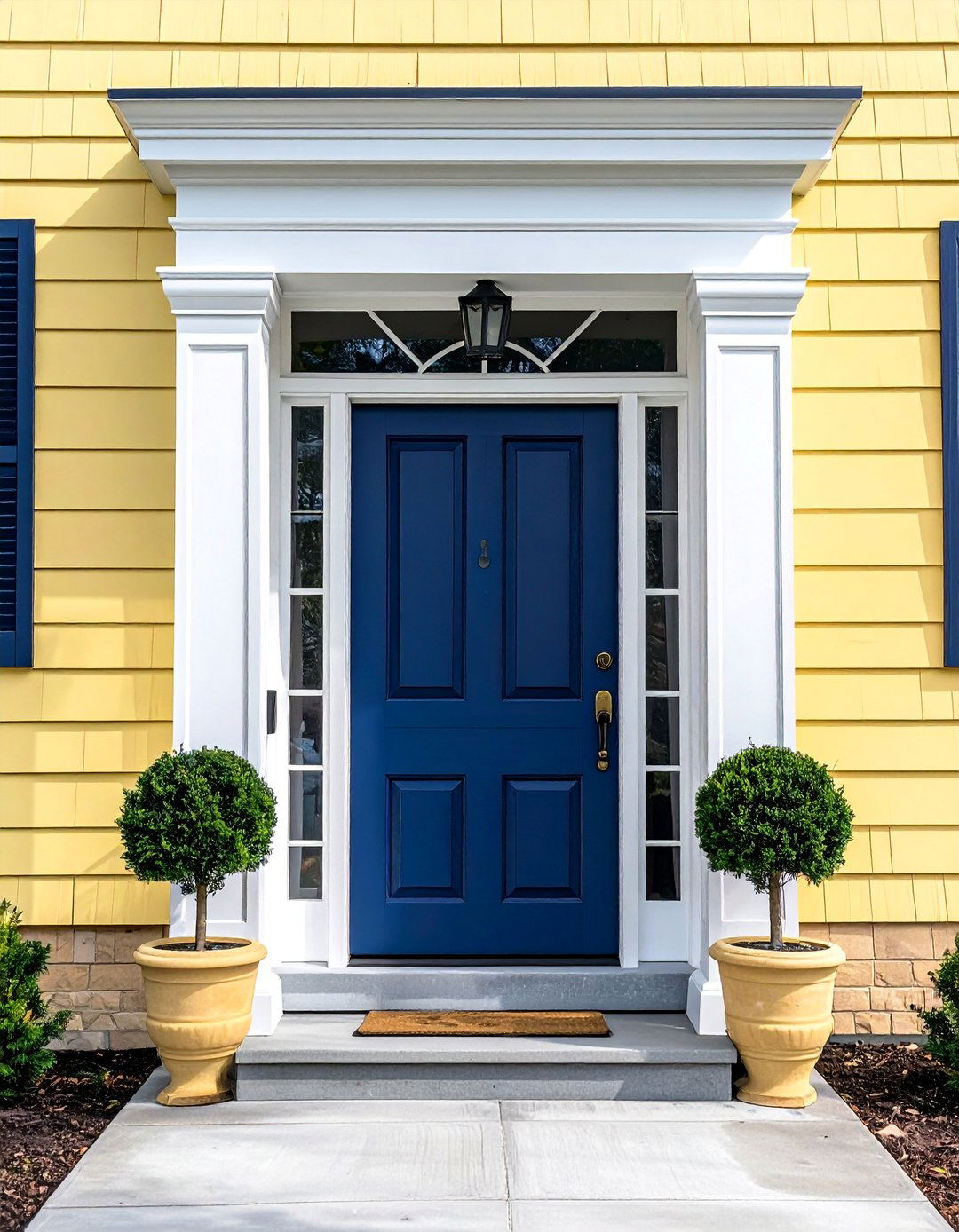
Framing the front door with decorative pilasters adds a layer of architectural depth and classical grandeur. Pilasters are flattened, rectangular columns that are affixed to the wall on either side of the door, giving the illusion of supporting the pediment or crosshead above. This feature is a hallmark of formal Georgian and Federal-style Colonial homes, used to create a more imposing and structured entryway. Whether simple and flat or ornately fluted, pilasters enhance the door's significance as the central feature of the facade, lending it an air of importance and historical authenticity that is truly striking.
17. Colonial Front Door with Symmetrical Lantern Sconces
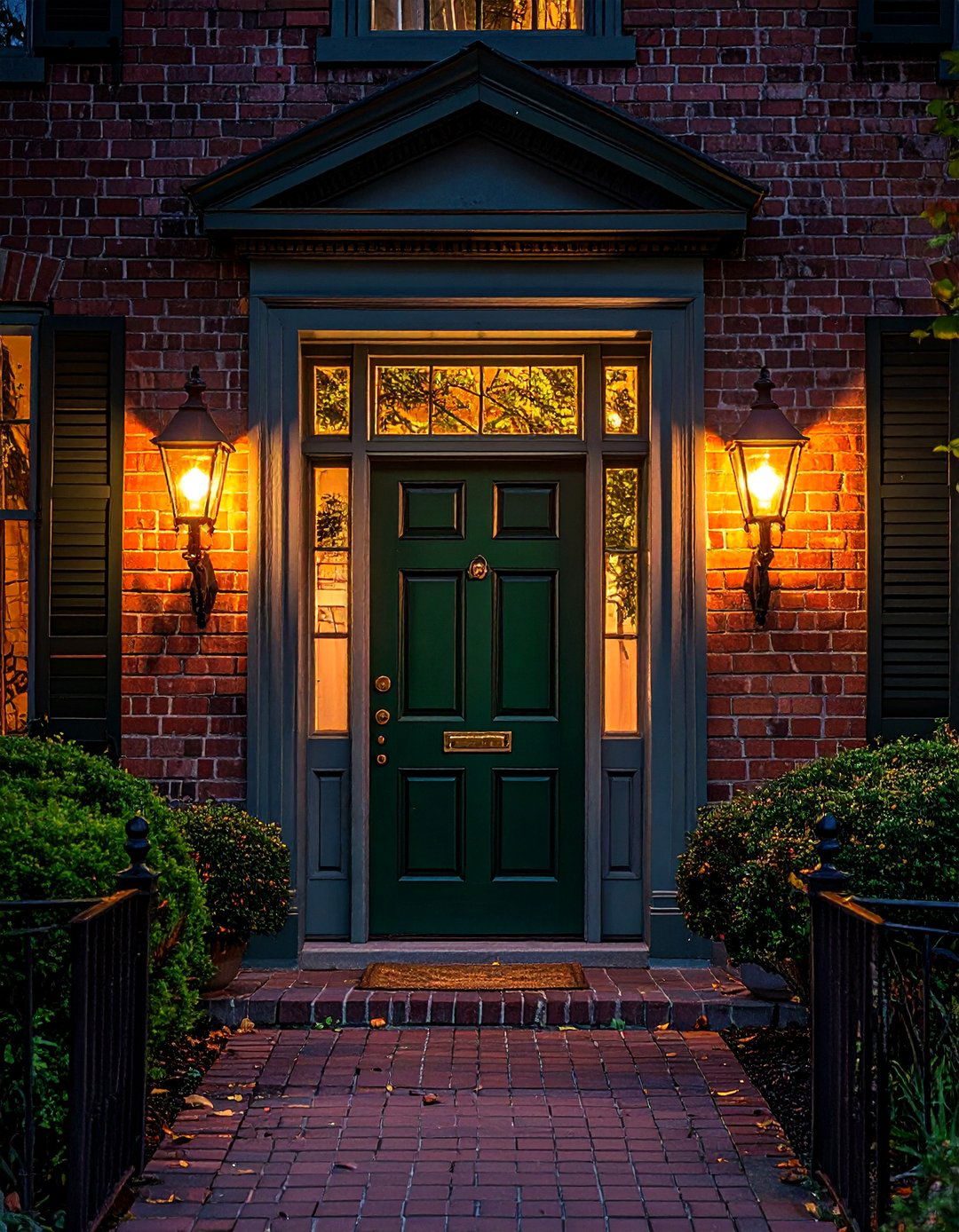
Proper lighting is essential for both function and aesthetics, and symmetrical lantern-style sconces are the perfect complement to a Colonial front door. Placing a lantern on each side of the door reinforces the core Colonial principle of balance and symmetry. Choose fixtures made from materials like brass, bronze, or black-finished iron with clear or seeded glass panes to align with the historical style. These lanterns not only illuminate the entryway for safety but also cast a warm, welcoming glow in the evening, highlighting the door and creating an inviting ambiance that enhances the home's curb appeal after dark.
18. A White-on-White Colonial Front Door Ensemble

For a crisp, clean, and cohesive look, consider a white-on-white color scheme for your front entrance. Painting the door, trim, sidelights, and any surrounding pediments or pilasters in the same shade of classic white creates a bright and elegant statement. This monochromatic approach is especially effective on homes with darker siding, as it makes the entryway pop with brilliant contrast. The beauty of this idea lies in its simplicity and understated sophistication. It allows the architectural details, like the door's paneling and the intricate moldings, to stand out through shadow and light rather than color.
19. Colonial Front Door with Divided-Lite Glass Panels
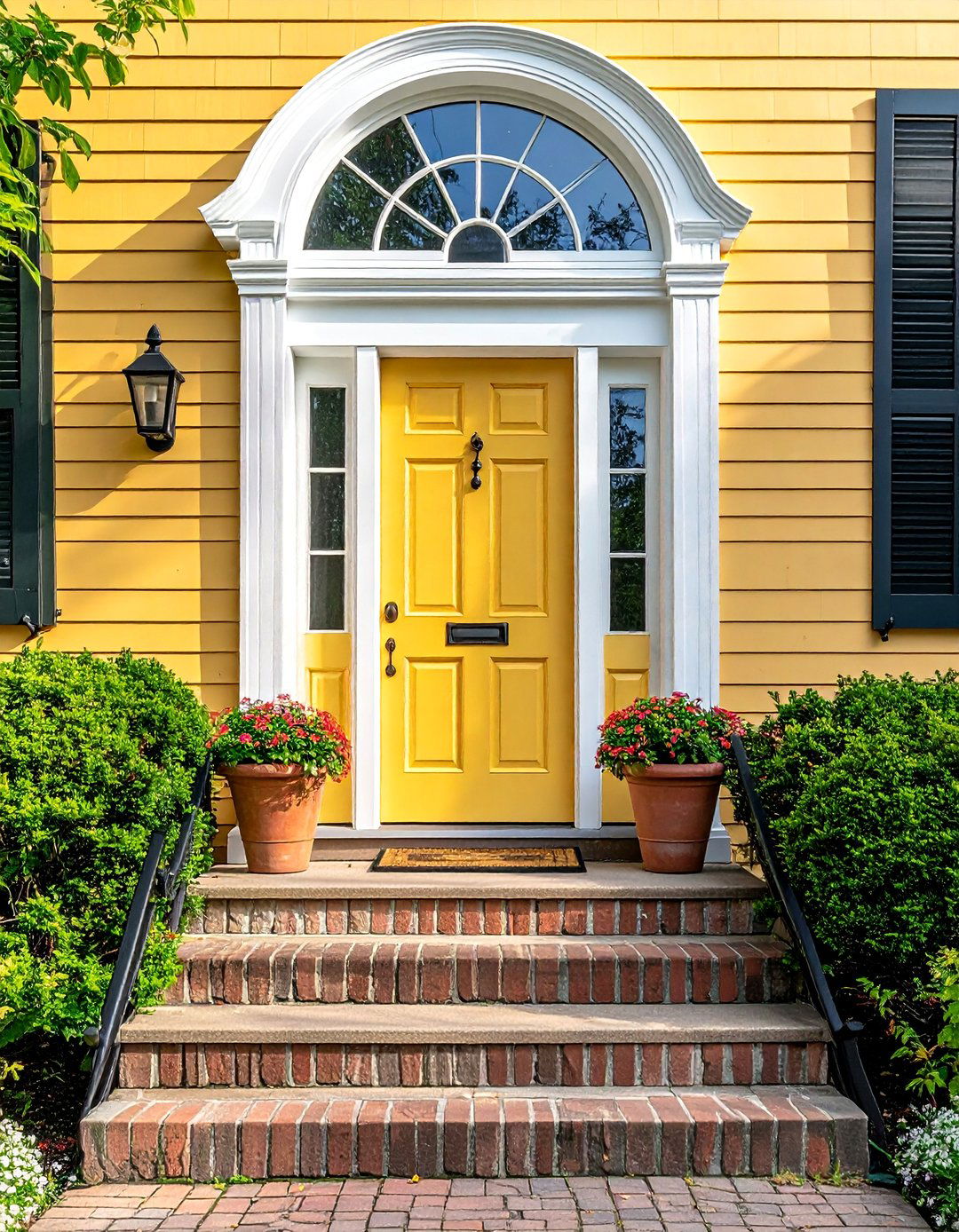
To increase natural light without sacrificing traditional style, select a Colonial door that incorporates glass panels with divided lites. This design features one or more glass panes in the upper portion of the door, separated by mullions or grilles to create a pattern of smaller windows. This style allows sunlight to flood the foyer while maintaining a classic look that complements the window designs of the main house. A nine-lite or twelve-lite pattern is a popular choice that feels authentic and balanced. It’s an ideal solution for brightening a dark entryway while preserving historical charm.
20. A Historically Inspired Hunter Green Colonial Front Door
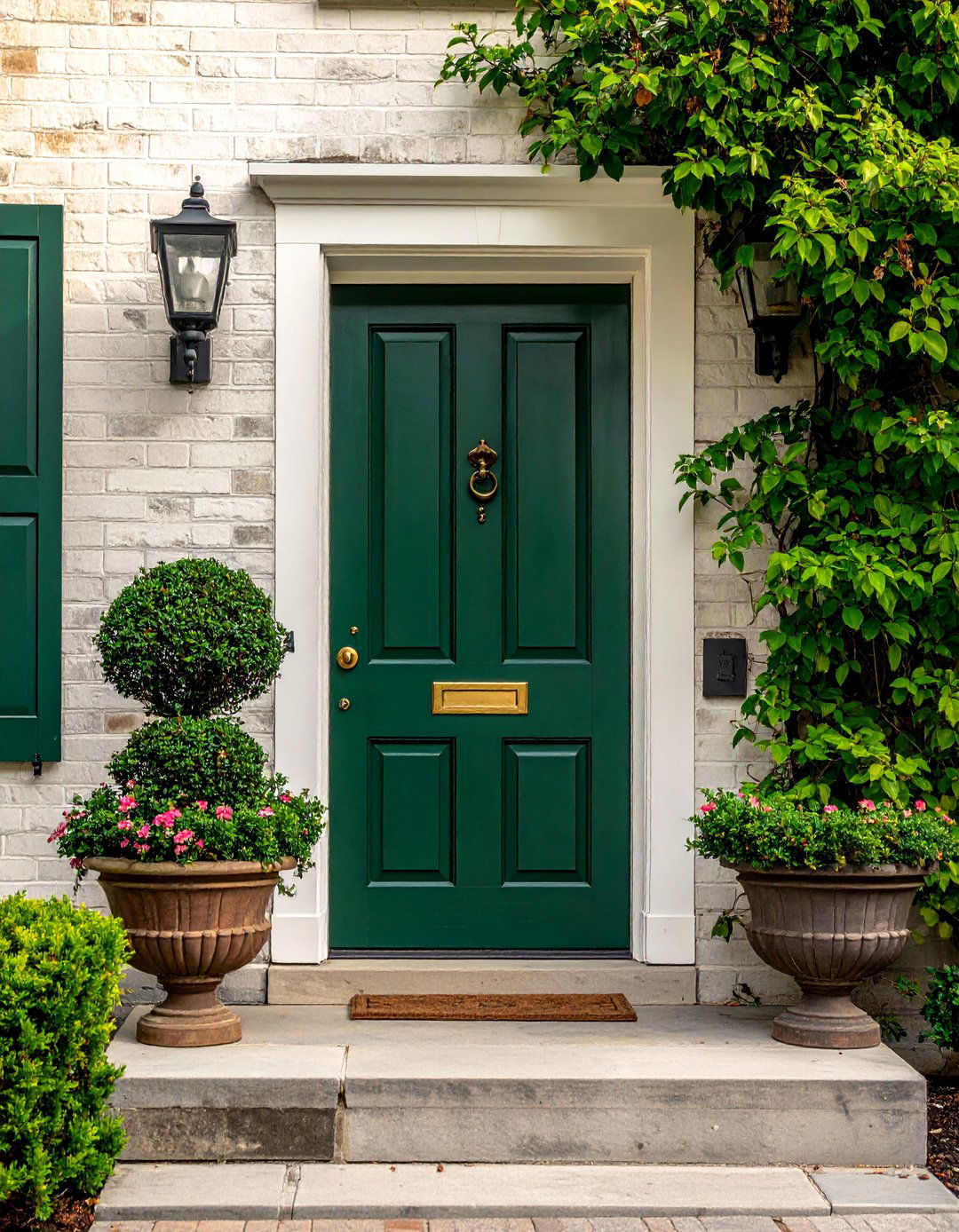
Drawing inspiration from the natural landscapes of the colonial era, a deep hunter green front door is a sophisticated and historically appropriate choice. This dark, earthy color is elegant and understated, providing a rich contrast against white or cream siding without being as stark as black. Hunter green evokes a sense of tradition, stability, and connection to nature. It pairs beautifully with aged brass hardware and complements homes surrounded by lush gardens or mature trees. This color choice offers a unique yet timeless appeal, giving your home a distinguished and grounded presence on the street.
Conclusion:
Choosing the right Colonial front door is an investment in your home's character and timeless appeal. By focusing on classic elements like six-panel designs, traditional colors, authentic hardware, and architectural surrounds such as pediments and sidelights, you can create a welcoming and historically reverent entrance. Whether you opt for a bold, painted statement or the warmth of natural wood, these ideas provide a foundation for enhancing your curb appeal. A well-designed Colonial entryway not only honors architectural heritage but also creates a beautiful focal point that will be admired for years to come.

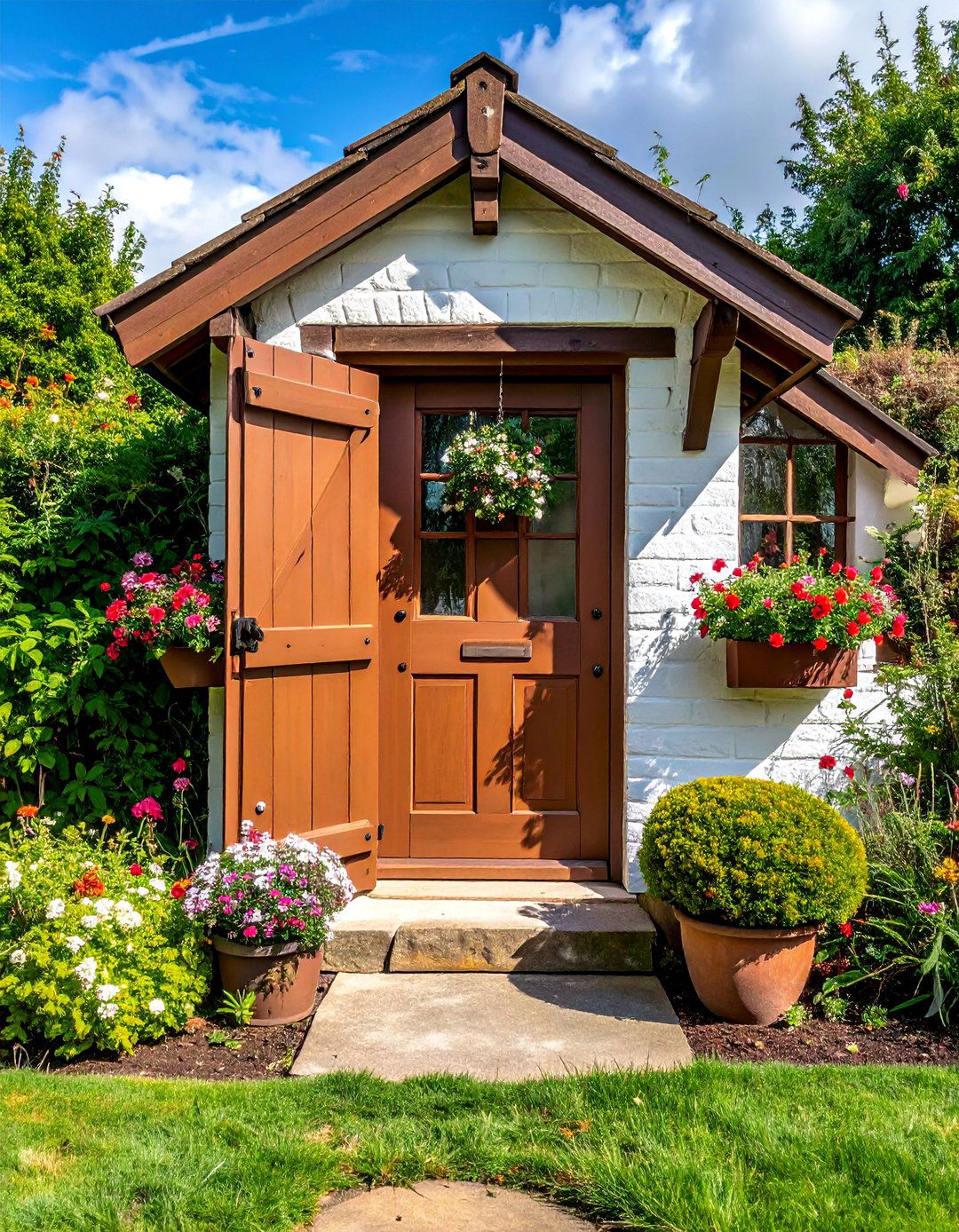
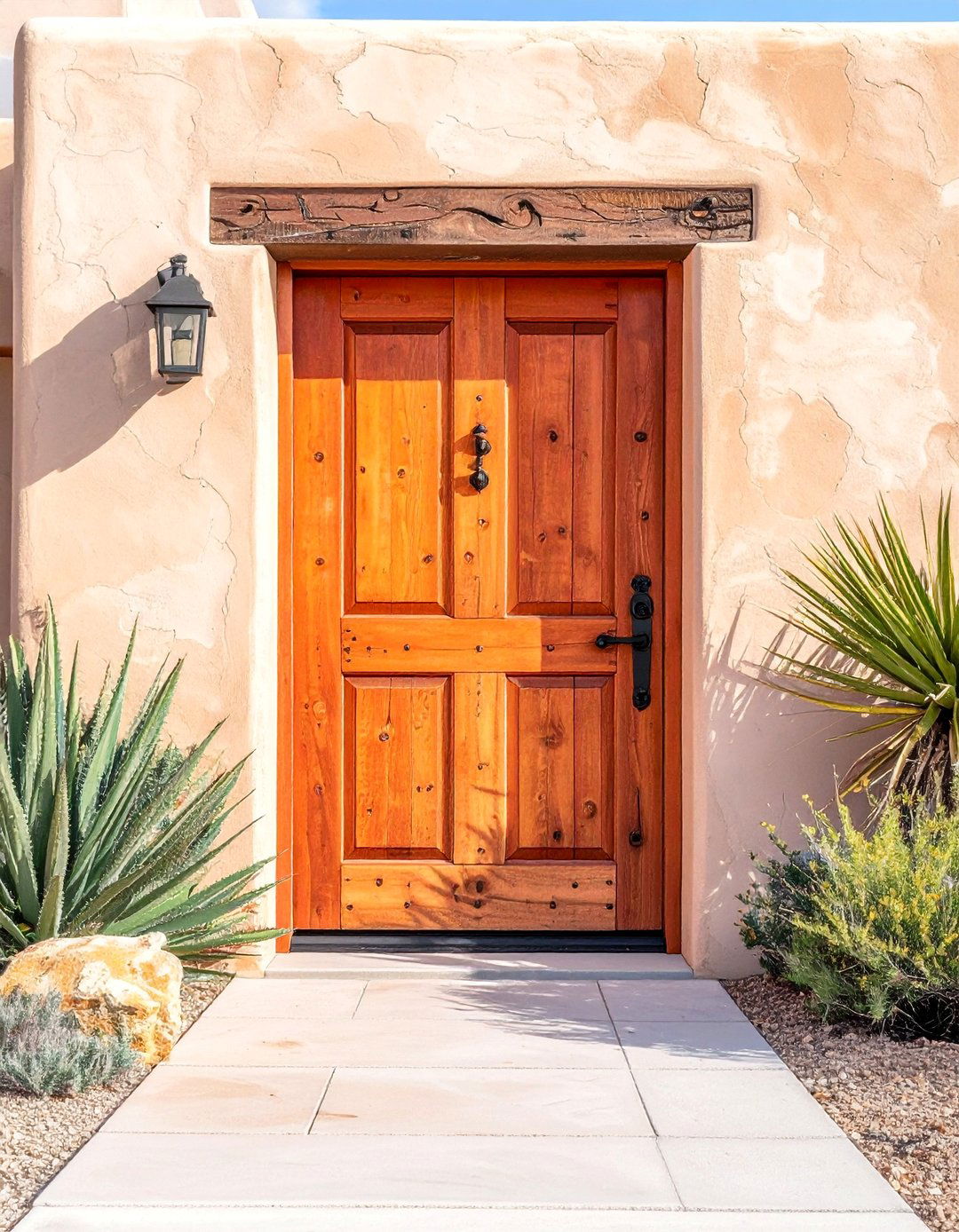
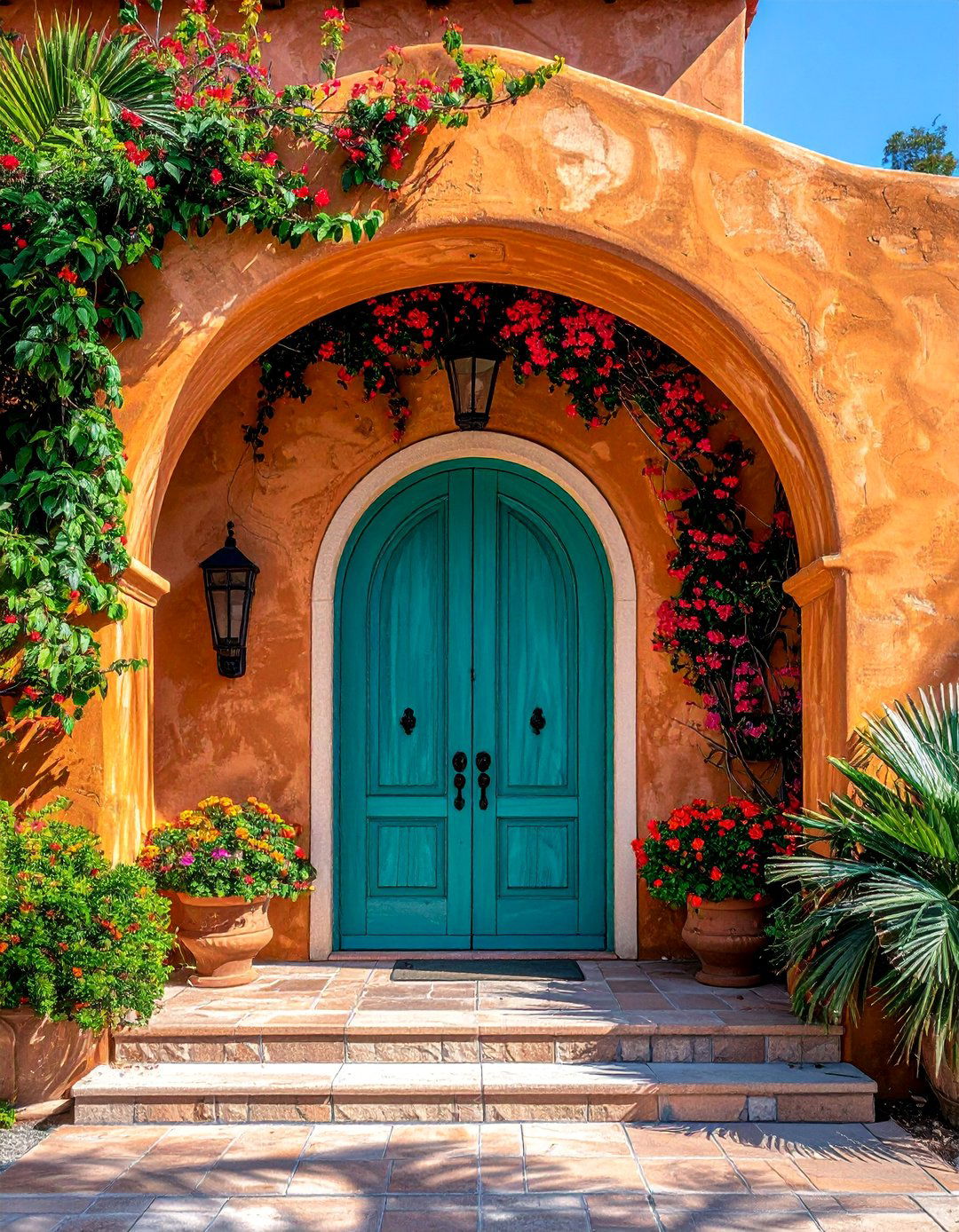
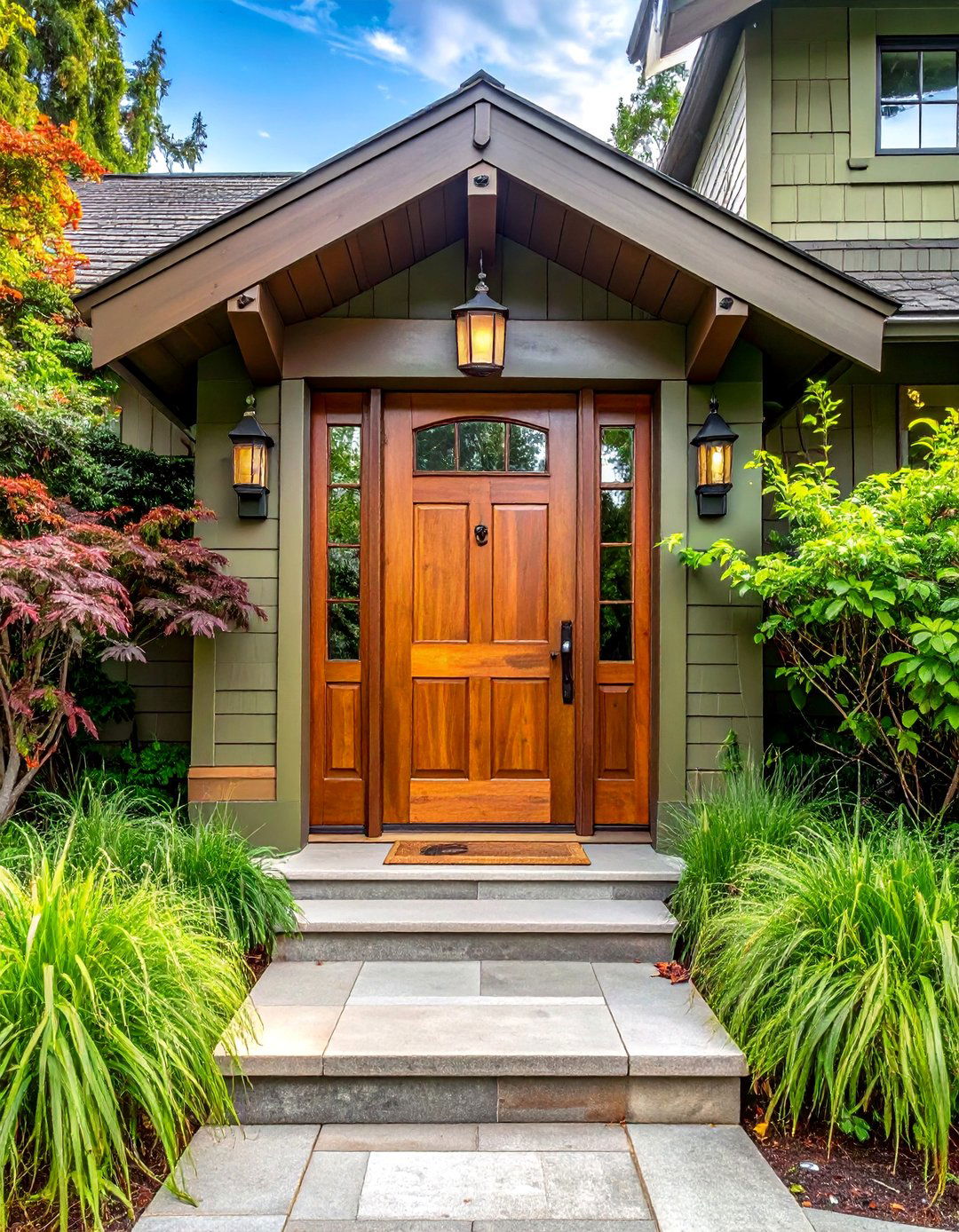
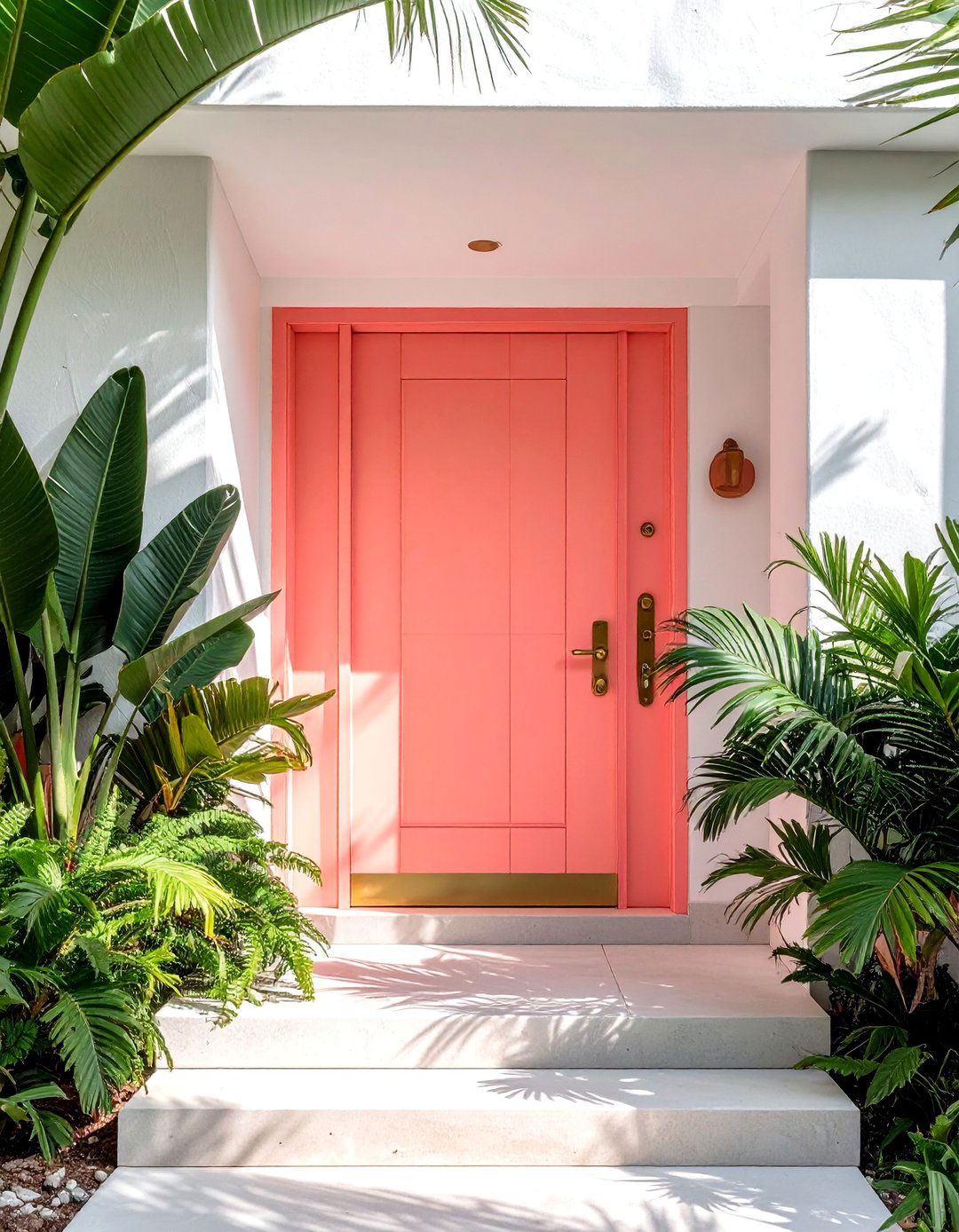
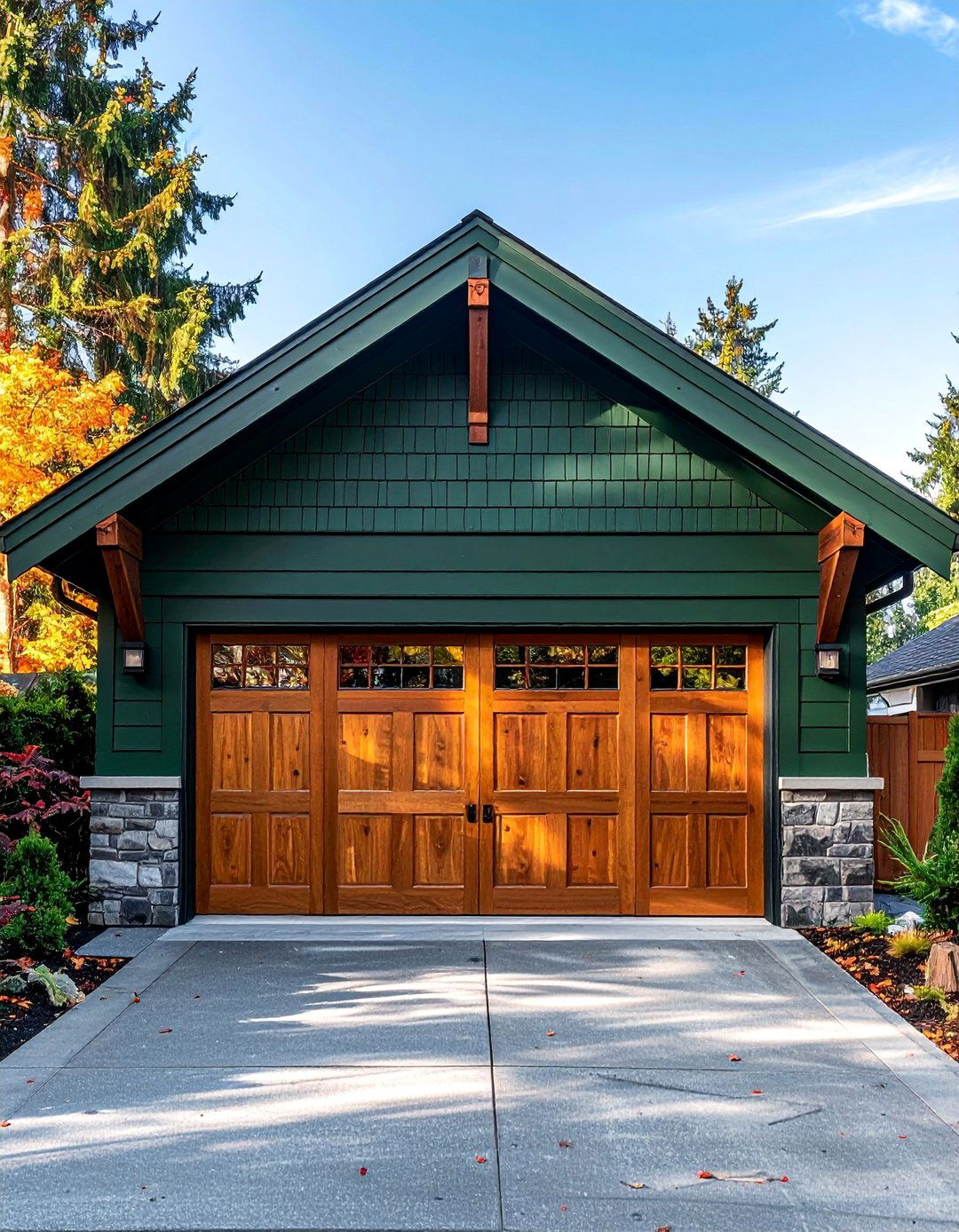
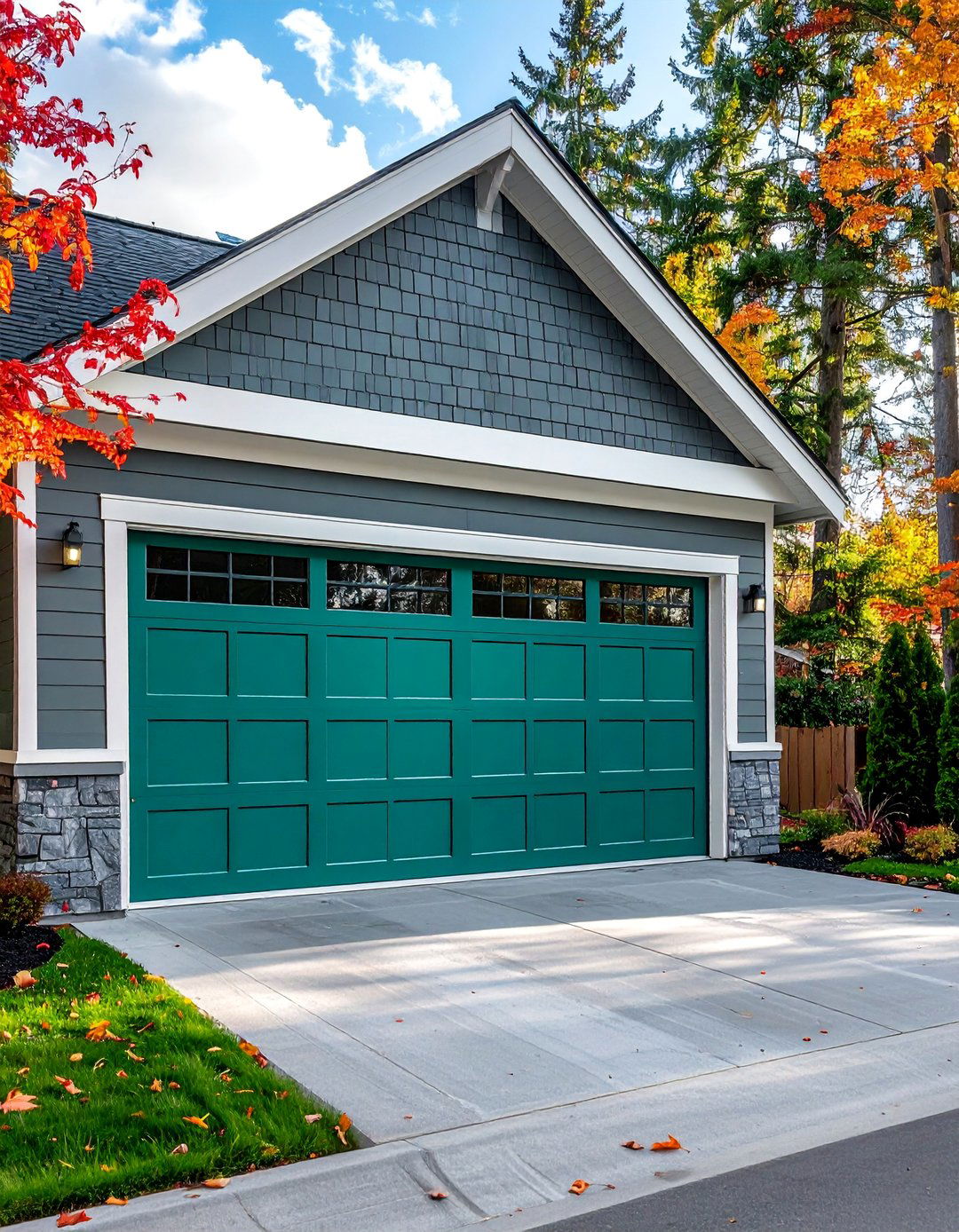
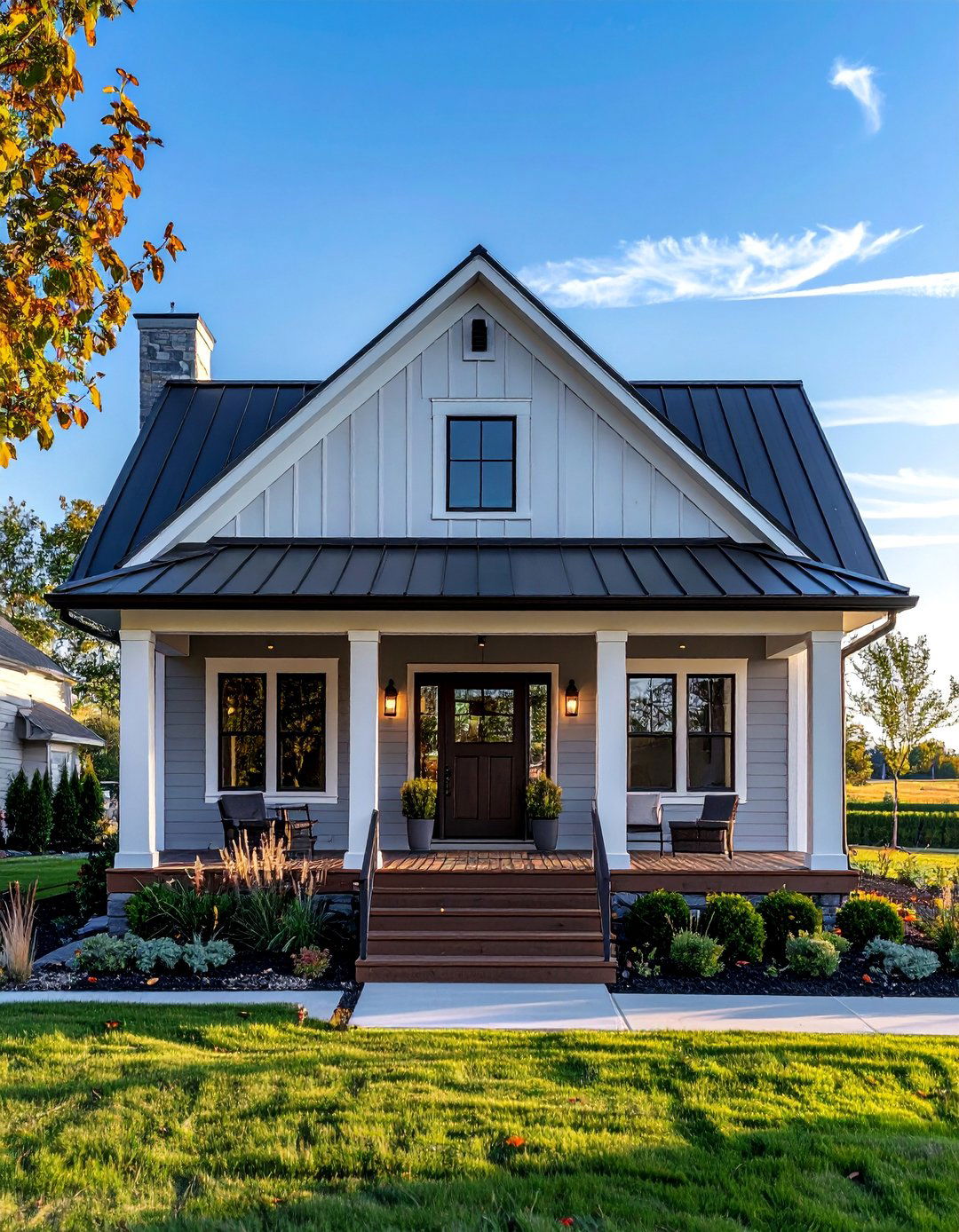
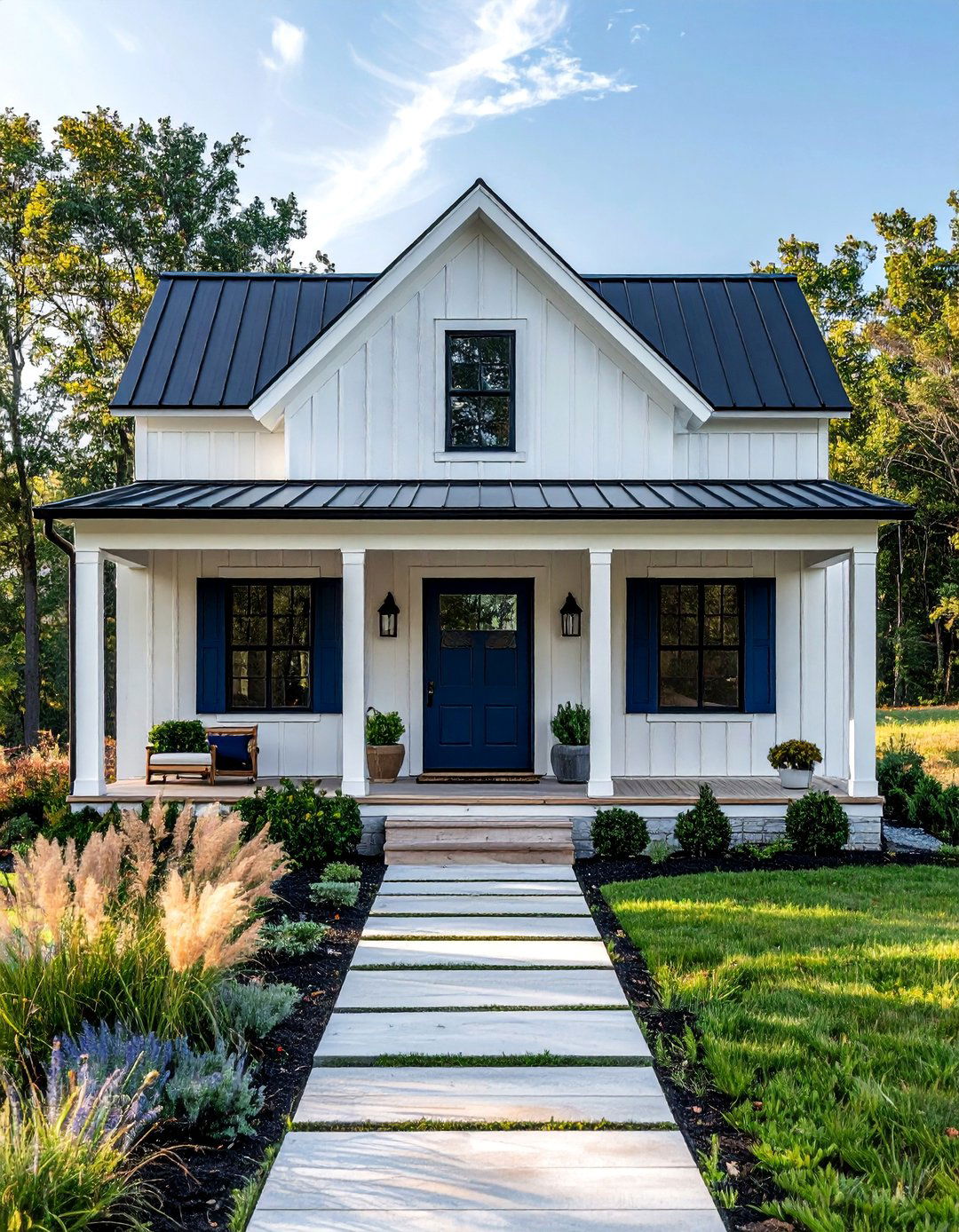



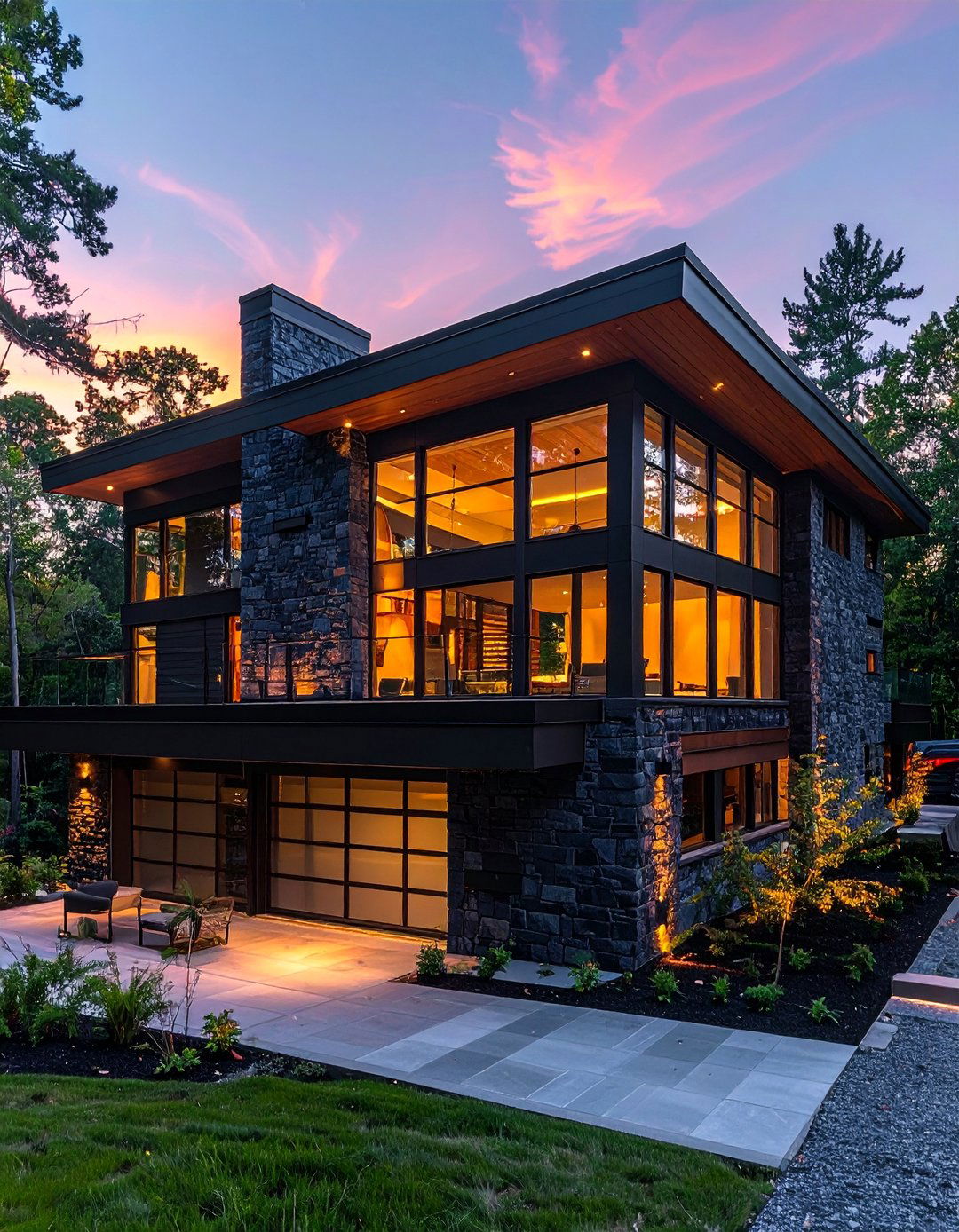
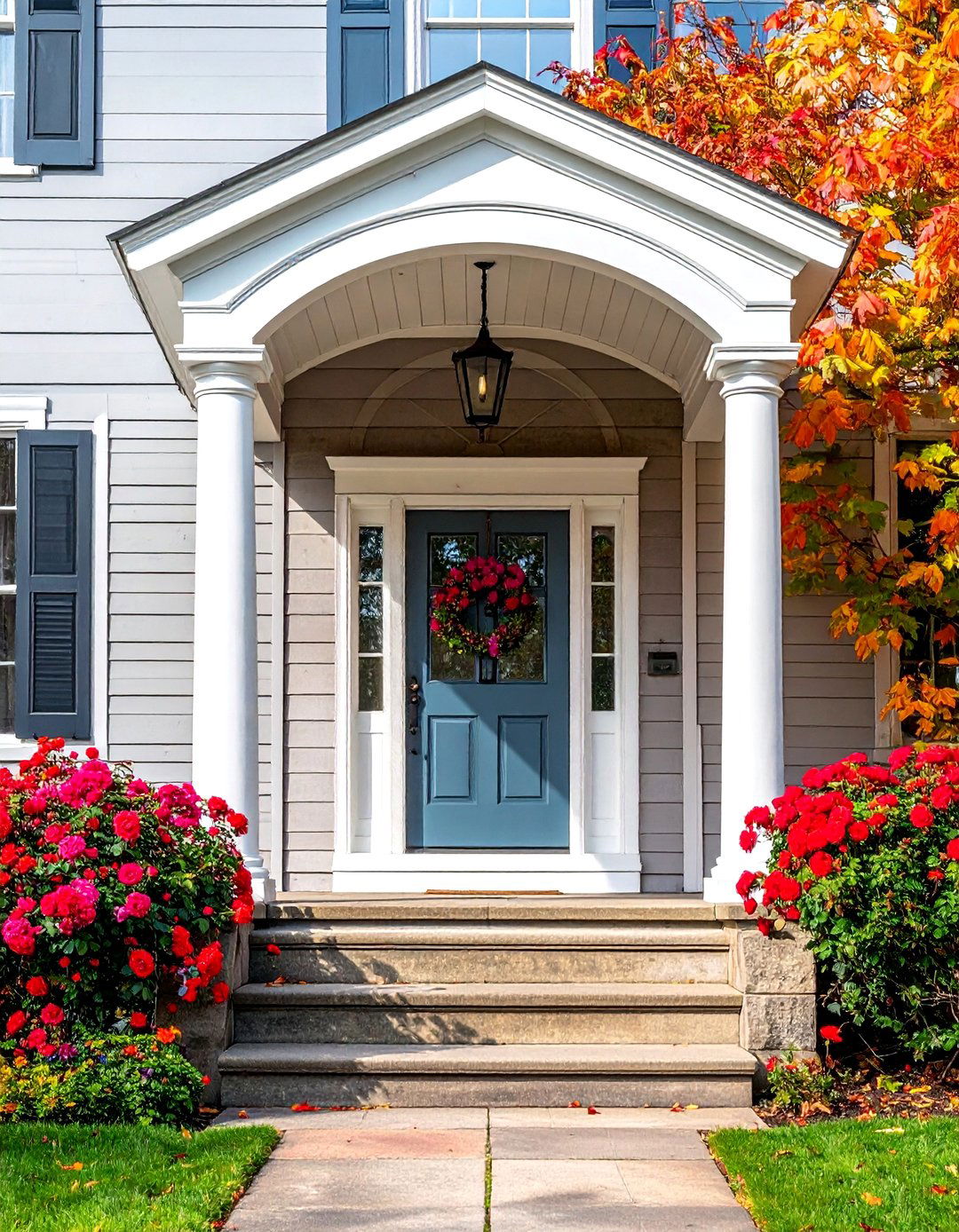
Leave a Reply